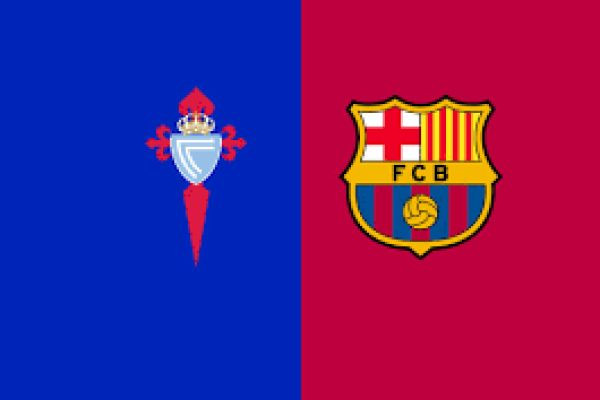The fixture between FC Barcelona and RC Celta de Vigo is a quintessential La Liga battle, showcasing a profound contrast in footballing philosophy and temperament. It is the sophisticated, positional command of the Catalan giants against the passionate, high-intensity disorder of the Galicians. While Barcelona’s objective is always three points and stylistic dominance, Celta’s singular mission is to utilize the unique atmosphere of the Balaídos stadium to engineer a monumental upset, often succeeding through sheer grit and tactical pressure.
FC Barcelona: Positional Play and Technical Supremacy
Barcelona’s tactical identity remains anchored in the Cruyffian philosophy—control through possession, superior technique, and positional fluidity, typically deployed in a $4-3-3$ or $3-2-5$ attacking shape.
Barça’s Strategic Mandate:
The Box Midfield and Possession Control: Barça aims to dominate the center of the pitch by creating numerical superiority (often a $3+2$ structure in build-up). The pivot (the defensive midfielder) and the advanced interior midfielders (the 'eights') are crucial for maintaining rhythm and executing the famous rondo passing sequences to patiently probe Celta’s defensive block.
Width and Inversion: The wingers provide the necessary width to stretch Celta’s back four, allowing the full-backs to invert or the central midfielders to push higher. The focus is on operating in the half-spaces—the channels between Celta's full-backs and centre-backs—where technical players like Pedri or Gavi thrive.
Gifting Goals to Lewandowski/Striker: The ultimate goal of the possession structure is to feed the main central striker, Robert Lewandowski (or his equivalent), with high-quality service, whether through crosses from deep or intricate cutbacks from the end-line.
Barça’s main vulnerability remains the defensive transition. Their aggressive commitment forward and high defensive line leave large gaps. If Celta bypasses the initial counter-press, the centre-backs are often exposed in long-sprint duels.
RC Celta de Vigo: High Press, Chaos, and Aspas Magic
Celta’s approach against Barcelona is rarely passive. They often adopt a hybrid style: either a deep, compact $4-4-2$ low block or a relentless man-oriented high press to disrupt Barça’s predictable build-up. Their success hinges on maximizing their intensity.
Celta’s Strategic Mandate:
Iago Aspas: The Tactical Heart: The talismanic Iago Aspas is Celta’s entire offensive blueprint. He rarely stays in the central striker position, instead dropping deep, floating wide, and operating as a False Nine or Creative Ten. His movement is specifically designed to drag Barça’s center-backs out of position and create space for supporting runners.
Vertical Transitions: Celta does not fear conceding possession. Their strategy is to absorb pressure and, the moment they win the ball, move it forward immediately and vertically—bypassing the slow-to-recover Barça midfield entirely. The speed of their wide midfielders and full-backs is essential here.
Physicality in Midfield: Celta must disrupt Barça's tempo by employing intense, physical pressure on the pivot and the interiors. They aim to win duels, force poor passes, and turn the match into a scrappy, less technical affair.
Celta’s primary vulnerability is maintaining that intensity for the full $90$ minutes. If Barça successfully wears them down, the Celta defense often collapses late in the game, conceding multiple goals in quick succession.
Key Decisive Tactical Conflicts
The match will be decided by the outcome of three critical duels:
Aspas vs. The Barça Center-Backs: This is the most crucial match-up. Aspas's ability to pull defenders out of position and execute an impossible through-ball must be neutralized. Barça’s centre-backs (e.g., Ronald Araújo or Jules Koundé) cannot commit to following Aspas too high, or they expose the deep space; they must maintain their line and rely on the defensive midfielder to track him.
The Pressing Pivot: Can Celta’s central midfield successfully disrupt Barça’s pivot (often the most press-resistant player)? If they can force turnovers in that crucial area, Celta creates high-value scoring chances. If the pivot escapes the press, Barça controls the game.
Barça’s Full-Backs vs. Celta’s Width: The success of Barça’s attack relies on their full-backs pushing high. Celta will specifically look to launch diagonal balls into the vacated space behind them, often leading to a one-on-one duel for Aspas or a fast winger.
Cultural Context and Prediction
The fixture holds a unique emotional context. Celta’s identity is one of resistance, especially against the capital and Catalan elites. Playing at Balaídos is always a hostile experience for Barcelona, making it a genuine mental test. Celta often plays their best football when adopting the underdog mentality against the giants.
Expect Barça to dominate possession ($65\%$+) and control the tempo. Celta will launch aggressive, targeted attacks, seeking to capitalize on a single defensive mistake. While Barça’s superior technical quality makes them the logical favorites, Celta's home form and the brilliance of Iago Aspas always guarantee a genuine contest.
A narrow, high-scoring affair is common here, with a final score likely around $2-1$ or $3-2$ in favour of FC Barcelona, provided they avoid the costly late defensive lapses Celta has historically profited from.








